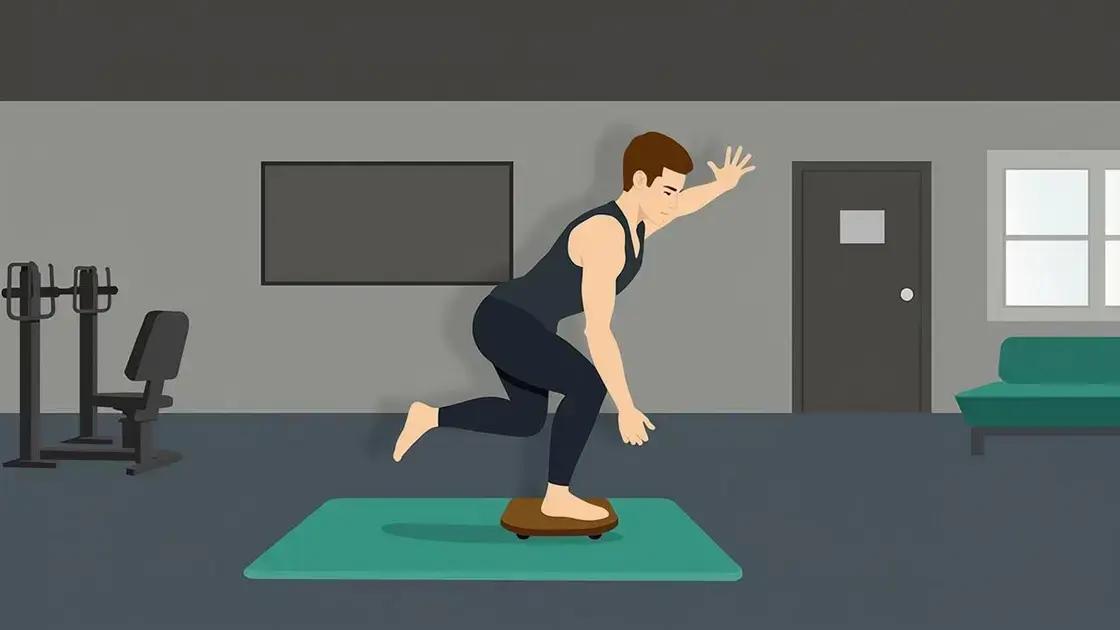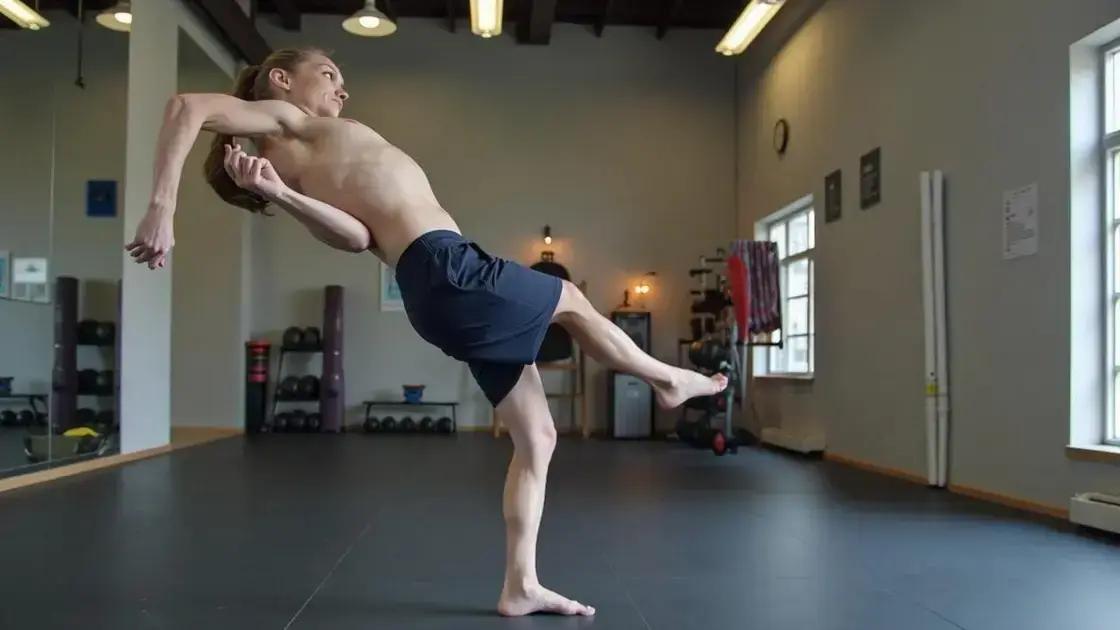Incorporating balance challenges into your strength routine can enhance stability, coordination, and core strength, ultimately improving overall fitness and reducing injury risk. Regular practice, using a variety of exercises and equipment, will ensure significant gains in performance and functionality.
Incorporating balance challenges into your strength routine can significantly enhance your workouts. These exercises not only improve stability but also engage stabilizing muscles that are often overlooked. As we explore how to include balance challenges in your strength training, you’ll discover their benefits and learn effective techniques to implement them. Strengthening your core and improving overall coordination are just a few advantages of blending these elements into your training. Let’s dive into this essential aspect of fitness!
Understanding Balance Challenges

Balance challenges are exercises that test and improve your body’s ability to maintain stability during movement. These challenges often require you to engage multiple muscle groups, particularly your core, legs, and stabilizer muscles. Understanding balance is essential because it plays a crucial role in overall fitness and athletic performance.
What Are Balance Challenges?
Balance challenges can include activities such as standing on one leg, using a balance board, or performing exercises on an unstable surface. They teach your body how to react to instability, which is vital in daily activities and various sports. For example, athletes benefit from improved agility and coordination, which can enhance performance in their respective sports.
Types of Balance Challenges
Several types of balance challenges are designed for different fitness levels. Beginners might start with simple exercises like single-leg stands. More advanced practitioners can try dynamic movements, such as lunges or squats on a balance trainer. Progressing through various levels of difficulty helps improve your balance over time.
Why is Balance Important?
Having good balance is essential for preventing injuries, especially as we age. Falls are a leading cause of injuries in older adults. Therefore, incorporating balance challenges into strength routines can significantly reduce this risk. Additionally, improved balance enhances overall body mechanics, leading to better performance in other exercises.
How Balance Challenges Fit into Strength Training
Integrating balance challenges into your strength routine adds an essential component to your fitness program. They complement traditional strength exercises by forcing your muscles to adapt to varying positions and forces. Combining balance training with strength exercises can lead to better muscle engagement and enhanced athletic performance.
Benefits of Balance Training

Balance training offers numerous benefits that can enhance your overall fitness and well-being. Regularly engaging in balance exercises improves core stability, which is crucial for nearly all physical activities.
Enhances Functional Fitness
One of the primary benefits of balance training is its ability to enhance functional fitness. This means that daily activities, like walking, climbing stairs, and playing sports, become easier and safer. Strong balance helps you perform movements with greater control and efficiency.
Reduces Risk of Injury
Balance training is particularly effective in reducing the risk of falls and injuries. When you improve your balance, you develop greater body awareness, which helps in avoiding awkward positions that lead to injuries. This is especially important for older adults and individuals recovering from injuries.
Improves Athletic Performance
For athletes, balance training can enhance performance across multiple sports. Better balance contributes to improved agility, coordination, and power. It allows athletes to react more quickly and maintain control of their movements during competition.
Supports Core Strength and Stability
Many balance exercises engage the core, leading to increased core strength. A strong core is vital for stability during dynamic movements and can help alleviate lower back pain, contributing to better posture and overall strength development.
Boosts Mind-Body Connection
Balance training helps improve the mind-body connection! By focusing on your balance, you become more aware of your movements and body positioning. This mindfulness aspect can lead to better coordination and functional movement patterns.
Incorporating Balance into Strength Routines

Incorporating balance into strength routines can take your workouts to the next level. By adding balance challenges, you engage more muscles and improve coordination while building strength.
Start with Basic Exercises
Begin by integrating balance exercises into existing strength movements. For example, perform squats or lunges while standing on one leg. This not only targets your lower body but also forces your core and stabilizing muscles to engage.
Use Balance Equipment
Utilizing equipment like balance boards, stability balls, or BOSU trainers can enhance your routine. While performing exercises like push-ups or squats, try using these items to challenge your stability further. This adds variety and intensifies your workouts.
Combine Static and Dynamic Movements
Mix static balance exercises, such as standing on one leg, with dynamic movements like jumping or twisting. This technique helps your body learn to maintain balance while in motion, which can be particularly useful in athletic performance.
Focus on Core Strength
When integrating balance training, always emphasize core strength. Strong core muscles facilitate better balance. Consider adding exercises like planks or side planks, where you can focus on stability while working on strength.
Progressive Complexity
As you grow more confident in your balance skills, increase the difficulty of your exercises. Try closing your eyes while balancing or performing exercises on uneven surfaces. Gradually progressing in complexity will enhance your strength routine significantly.
Tips for Effective Balance Challenges

To make the most of your balance challenges, consider these effective tips that will enhance your training. By following these suggestions, you can improve your stability and overall fitness.
Set Clear Goals
Start by establishing clear goals for your balance training. Determine what you want to achieve, whether it’s improving stability, enhancing strength, or increasing agility. Having defined objectives will help keep you motivated and focused.
Incorporate Variety
Keep your workouts interesting and challenging by incorporating a variety of balance exercises. Change your routine by trying different activities, like yoga poses, parkour moves, or balance-focused strength exercises. This variety not only keeps it fun but also enhances overall balance skills.
Practice Regularly
To see improvements, practice balance challenges regularly. Consistency is key. Aim for a few sessions each week, gradually increasing the intensity and duration of your balance exercises. A regular routine will yield the best results.
Engage Your Core
Always focus on engaging your core while performing balance challenges. A strong core is essential for maintaining stability. Exercises like planks or deadbugs can help enhance core strength, making it easier to perform balance activities.
Use a Mirror for Feedback
When practicing balance exercises, use a mirror to check your form. Observing your body’s alignment can promote proper technique and help prevent injuries. This feedback can also motivate you to maintain good posture and balance.
Start Slow and Progress Gradually
It’s important to start with basic balance exercises before advancing to more complex moves. This gradual progression allows your body to adapt and reduces the risk of injury. There’s no rush; build your skills over time for lasting results.
Incorporating Balance Challenges into Your Strength Routine
Incorporating balance challenges into your strength routine is crucial for enhancing overall fitness and performance. Not only do these exercises improve stability and coordination, but they also help prevent injuries and boost core strength.
By understanding balance challenges and their benefits, you can effectively include them in your workouts. Using a variety of techniques, practicing regularly, and maintaining focus on your core will ensure that you derive maximum benefits from your training.
Remember to set clear goals and progress gradually to enhance your balance skills and overall strength. The combination of strength training and balance exercises can lead to a more functional and balanced body.
Embrace the journey of incorporating balance challenges into your routine, and unlock new levels of fitness and agility!
FAQ – Frequently Asked Questions About Incorporating Balance Challenges in Strength Routines
What are balance challenges?
Balance challenges are exercises designed to improve your stability and coordination, often requiring you to engage multiple muscle groups while performing movements.
How can I effectively incorporate balance challenges into my strength routine?
Start by adding simple balance exercises to your current workouts, use balance equipment, and make sure to progress gradually as you become more comfortable.
What are the benefits of balance training?
Balance training enhances functional fitness, reduces the risk of injury, improves athletic performance, and supports core strength.
How often should I practice balance challenges?
Aim to practice balance exercises a few times a week to see consistent improvements in your stability and overall fitness.
What types of exercises are good for balance training?
Exercises like single-leg stands, lunges, squats on unstable surfaces, and yoga poses are great for improving balance.
Can balance training help prevent injuries?
Yes, by improving your stability and body awareness, balance training significantly reduces the risk of falls and injuries.












